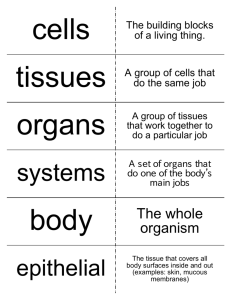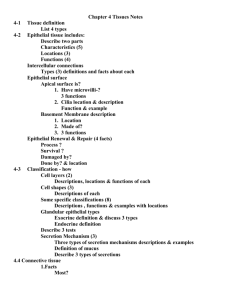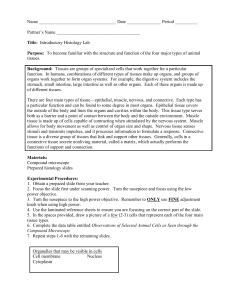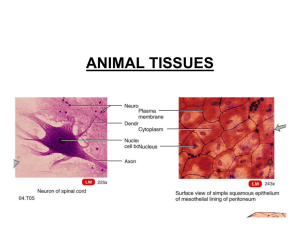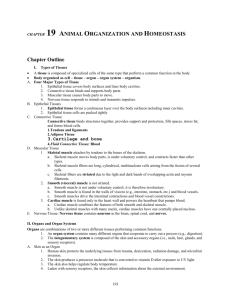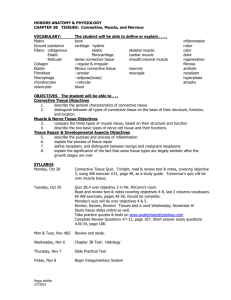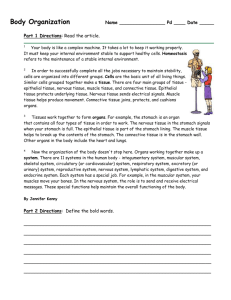Chapter 3 Quiz
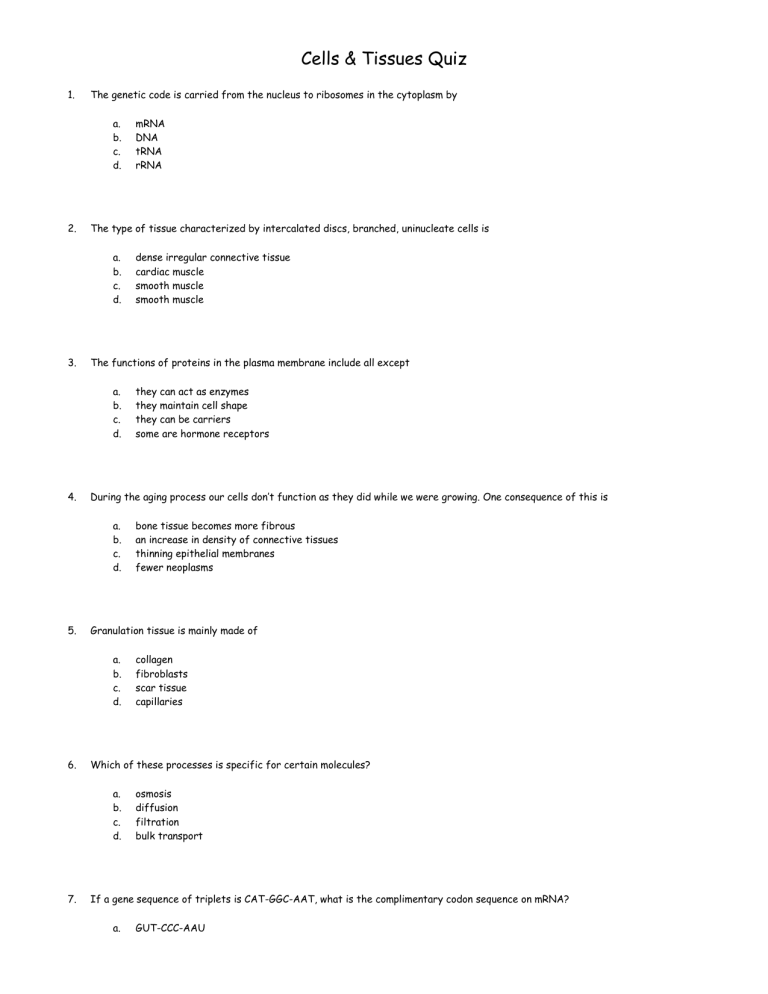
Cells & Tissues Quiz
1.
The genetic code is carried from the nucleus to ribosomes in the cytoplasm by a.
mRNA b.
DNA c.
tRNA d.
rRNA
2.
The type of tissue characterized by intercalated discs, branched, uninucleate cells is a.
dense irregular connective tissue b.
cardiac muscle c.
smooth muscle d.
smooth muscle
3.
The functions of proteins in the plasma membrane include all except a.
they can act as enzymes b.
they maintain cell shape c.
they can be carriers d.
some are hormone receptors
4.
During the aging process our cells don’t function as they did while we were growing. One consequence of this is a.
bone tissue becomes more fibrous b.
an increase in density of connective tissues c.
thinning epithelial membranes d.
fewer neoplasms
5.
Granulation tissue is mainly made of a.
collagen b.
fibroblasts c.
scar tissue d.
capillaries
6.
Which of these processes is specific for certain molecules? a.
osmosis b.
diffusion c.
filtration d.
bulk transport
7.
If a gene sequence of triplets is CAT-GGC-AAT, what is the complimentary codon sequence on mRNA? a.
GUT-CCC-AAU
b.
GTA-CCG-TTA c.
GUA-CCG-UUA d.
CAT-GGC-AAT
8.
The most abundant and widespread tissue type in the body is a.
muscle b.
epithelial c.
connective d.
blood
9.
Exocytosis is a process by which a.
cells move solutes down their concentration gradients b.
ATP is used by the cell in order to take in food c.
ATP is used to secrete cell products d.
ATP is not required but some movement occurs
10.
The type of muscle tissue which is under voluntary control is a.
cardiac muscle b.
dense muscle c.
skeletal muscle d.
smooth muscle
11.
Blood is classified as a type of ___ tissue. a.
connective b.
dense fibrous c.
loose areolar d.
epithelial
12.
Malignant cancer cells are carried by the blood to other organs. This is called a.
neoplasm b.
oncogenesis c.
hyperplasia d.
metastasis
13.
Chemotherapy used to treat some types of cancer can cause nausea, vomiting and hair loss because the drugs a.
cause inactivation of tumor suppressor genes b.
kill all body cells which are dividing c.
are poisonous d.
are not able to stop genetic mutations
14.
Cells placed in a hypertonic solution will a.
swell and may burst b.
exert high osmotic pressure c.
shrink and their membranes will crenate d.
remain normal
15.
Which of these is true about membrane transport? a.
filtration is one type of active transport b.
passive transport involves movement of molecules down their concentration gradients c.
facilitated diffusion is similar to osmosis d.
osmosis requires a protein carrier in the membrane
16.
Epithelial tissues a.
function mainly in contraction b.
form the lining and/or covering of many organs c.
are highly vascularized d.
are used for transport
17.
Which of these is an example of an inclusion? a.
glycogen granules b.
cytoplasm c.
ribosomes d.
endoplasmic reticulum
18.
Which of these is not used in movement? a.
microfilaments b.
cilia c.
flagella d.
mitochondria
19.
Which of these is NOT a primary tissue type? a.
connective b.
blood c.
nervous d.
epithelium
20.
Smooth muscle is found a.
near the surface of the skin b.
outside the main organs of the body c.
in the walls of hollow organs and blood vessels d.
in the heart


